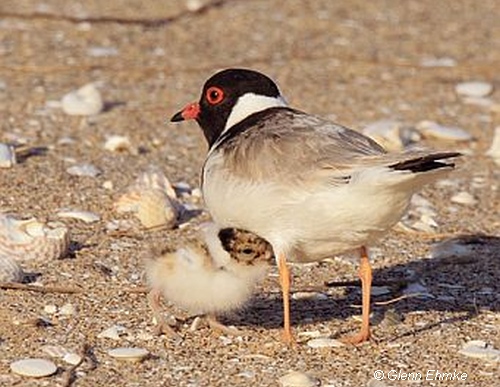It’s that time of year when the beaches along the Bellarine Peninsula coastline become the creche for the rare and threatened hooded plover as the breeding season commences.
These tiny, black, white and red birds nest along the surf beaches of Point Lonsdale, Ocean Grove, Barwon Heads and Breamlea from late August and, as the months get warmer, face some of their greatest dangers from beachgoers and dogs.
The hooded plover or ‘hoodie’ spends its whole life on the beach and nearby wetlands and is one of Australia’s most threatened birds. Survival has become nearly impossible on beaches with Australia’s current human population, given the popularity of our beaches on the Bellarine in the warmer months.
An adult pair of hooded plovers will lay up to three eggs in a scrape in the sand and incubate them for four weeks until the eggs hatch. The chicks can’t fly until they are five weeks old and must forage for their own food up and down the beach and along the water’s edge, avoiding the beach-goers, dogs and other predators.
Chicks move along the beach to feed.
Research has shown that a simple formula of alerting beach users with signs and temporary fencing, putting out wooden teepees for chicks to hide in and requesting dogs be on a lead is enough to tip the balance and give these endangered birds a better chance of having their chicks survive.
“Hooded plovers are a rarity along the Great Ocean Road and the Bellarine Peninsula, which makes protecting these little birds a very high priority,” City of Greater Geelong acting director of city services Peter Godfrey said.
“Dogs and cats are seen as predators of the species, just as foxes, ravens and other birds of prey are, and for this reason the City works closely with Birdlife Australia to put measures in place to protect the birds.”
The hooded plover is protected under the Victorian Flora and Fauna Guarantee Act 1988 and the Federal Environment Protection and Biodiversity Conservation Act 1999.







